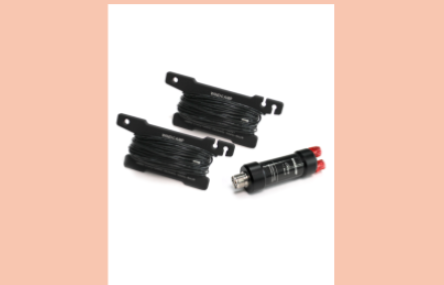
Much comparison has been made of the various models available today, but relatively little attention has been paid to available antennas. After all, no matter how good the receiver is, without a good antenna, nothing will be heard. In simple terms, the longer the piece of wire you can connect to any receiver, the more you will hear,
On the MW (AM) band, the antenna function is provided by a coil wound on a ferrite rod inside the receiver casing. On the FM band, a telescopic whip is provided. For SW (shortwave) an external antenna will provide the best results.
The simplest external antenna is a simple piece of wire connected to the “external antenna” socket of a receiver.
There are various models available from a simple wire with a plug on a plastic bobbin, to a retractable length of wire several metres long. Whilst these might be very portable and easy to carry, but no attention has been paid to matching the antenna to the receiver.

The best shortwave antenna will always be a resonant wire outside the building housing the receiver. Such antennas are normally fed using coaxial cable which provides shielding from interference generated inside and gets the active antenna element away from such noise sources.
A matched end fed longwire antenna is one of the simplest external antennas available, and will provide a huge performance improvement over an untuned piece of wire.
This is normally achieved using a long piece of wire (10M or so) and an “unun”, in simple terms a matching device to ensure maximum signal is provided to the receiver, all enclosed in a weatherproof housing suitable for outdoor mounting.

An even better solution than this is the “tuned” antenna, such as a dipole, normally reserved for amateur radio operators. The antenna is tuned by adjusting the length of the wire elements to the desired frequency.
The antenna elements are matched to the coaxial cable feeder using a balun. For transmitting applications this is vitally important, if the antenna is matched to the transmitter all the energy will be transferred to the antenna, and conversely when receiving, all available signal will be fed to the receiver. In this version the wire elements have frequency markings and can be unwound from the bobbin for the correct length.

For those of us that wish to receive shortwave signals but don’t have the room for an external antenna, an active loop may be the solution. Normally 60cm-100cm in diameter, an amplified loop antenna is a wideband device that can be mounted near a window, or outside. The MLA-30+ antenna is one of these and many users have reported great results using these both indoors and outdoors as their circumstances permit. Powered by a standard USB source, this amplifier comprises a power injector and amplifier separated by a length of coaxial cable.

Another fixed location antenna that can be used for shortwave, VHF and UHF is the discone. This antenna has a very wide bandwidth from 25-1300 Mhz and is hence very convenient to use on a wide range of radio bands.

In summary there is a wide range of economical antennas that can make a huge difference to shortwave reception.



Leave a Reply
Want to join the discussion?Feel free to contribute!